Mullingar, Co. Westmeath
Mullingar Poor Law Union was formed on 1st November 1839 and covered an area of 392 square miles. Its operation was overseen by an elected Board of Guardians, 30 in number, representing its 26 electoral divisions as listed below (figures in brackets indicate numbers of Guardians if more than one):
Co. Westmeath: Ballyncarrigy (2), Castlelost, Castletown, Castletowndelvin, Churchtown, Clonfad, Collinstown, Dysart, Enniscoffey, Heathstown, Killare (2), Killucan, Killulagh, Kinnegad, Leny, Lynn, Mullingar (3), Multifarnham, Newtown, Piercetown, Raharny, Rathconnell, Rathconrath, Streamstown, Taghmore, Templeoran.
The Board also included 10 ex-officio Guardians, making a total of 40. The Guardians met each week on Thursday at noon.
The population falling within the Union at the 1831 census had been 68,102 with divisions ranging in size from Dysart (population 1,540) to Mullingar itself (7,002).
The new workhouse, built in 1840-42, occupied a 10-acre site on Castlepollard Road, half a mile to the north of Mullingar. It was designed to accommodate 800 inmates. Its construction cost £7,250 plus £1,400 for fixtures and fittings etc. It was declared fit for the admission of paupers on 3 October 1842 and admitted its first inmates two months later on 8th December. The site location and layout are shown on the 1914 map below.
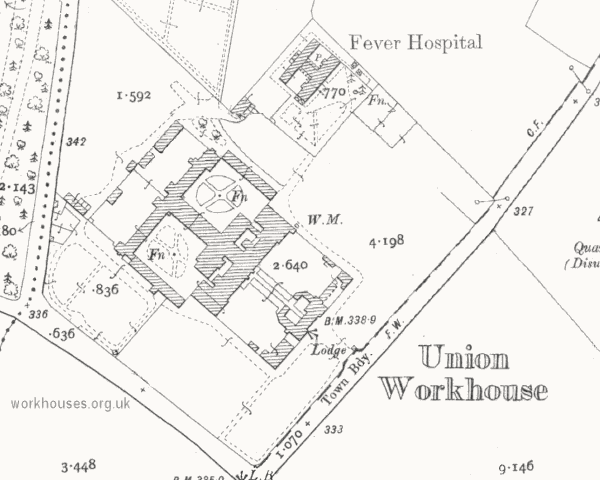
Mullingar workhouse site, 1914.
The workhouse building followed one of the standard designs by the Poor Law Commission's architect George Wilkinson, with a two-storey entrance block at the front containing a porter's lodge, receiving wards and Guardians' board-room.
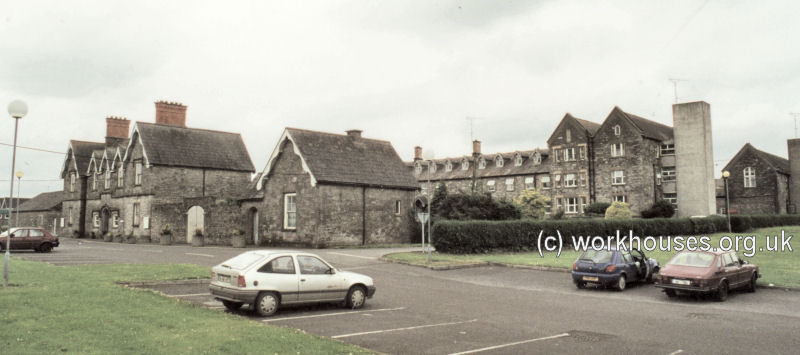
Mullingar workhouse site general view, 2000.
© Peter Higginbotham.
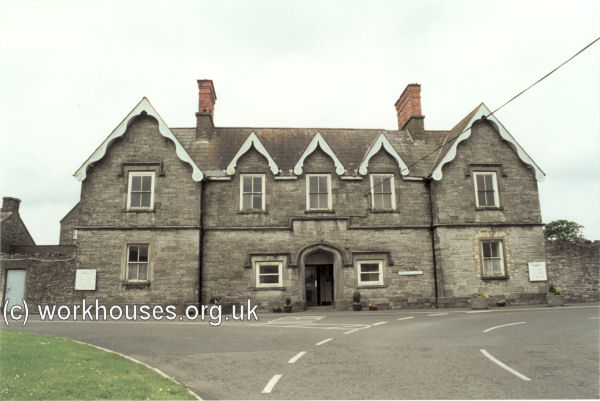
Mullingar entrance block, 2000.
© Peter Higginbotham.
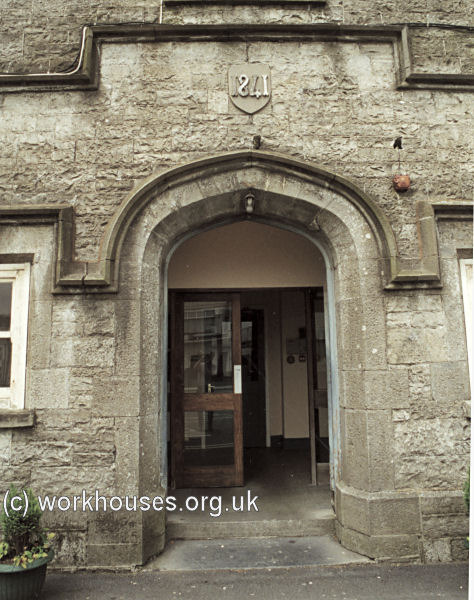
Mullingar workhouse entrance and date-stone, 2000.
© Peter Higginbotham.
Behind the entrance block stood a three-storey accommodation block, one half of which housed males, the other half females.
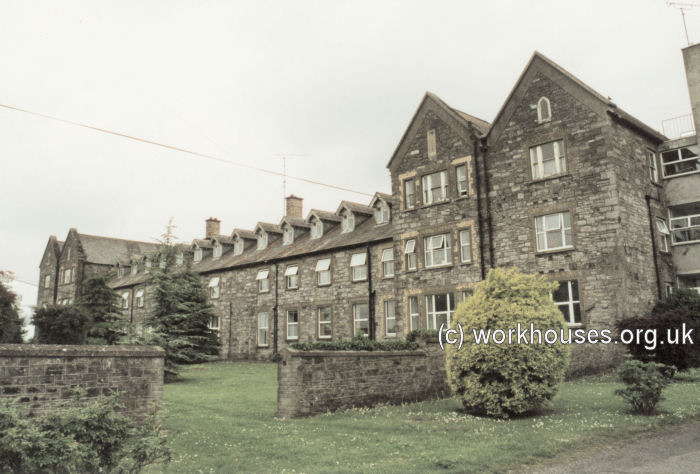
Mullingar, 2000.
© Peter Higginbotham.
At the rear, a range of single-storey utility rooms such as bakehouse and washhouse connected through to the infirmary and idiots' wards via a central spine containing the chapel and dining-hall. The infirmary later became known as the St Anne's block.
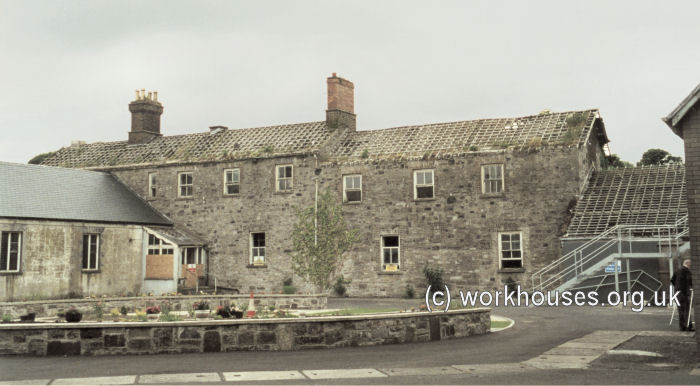
Mullingar - St Anne's block undergoing demolition, 2000.
© Peter Higginbotham.
During the famine in the mid-1840s, sleeping galleries were erected to accommodate additional inmates. A 60-bed fever hospital was erected at the north of the workhouse.
In 1895, Mullingar was visited by a "commission" from the British Medical Journal investigating conditions in Irish workhouse infirmaries. Like many others that were examined, the Mullingar workhouse suffered from antiquated sanitary facilities such as a lack of running water in the infirmary. The sole nurse was overstretched and at night, no nursing care was provided nor any means to summon help by the inmates who were locked in their wards. Further details are available in the full report.
At the 1901 census, the population of the union was 27,047 with 27 officials and 298 inmates in the workhouse.
Following the creation of the Irish Free Stte in 1921, the Board of Guardians was abolished. The main wworkhouse building was then redesignated as the Mullingar County Home and the infirmary as the County Hospital. The workhouse fever hospital was used for the treatment of tuberculosis (TB) cases.
In 1936, following the opening of a new County Hospital, the St Anne's block took over the treatment of TB patients until its closure in 1962. In 1998, demolition work began on the block in order to provide 200 tonnes of stone for the construction in Flanders of a commemorative tower to the Irish First World War dead.
The other former workhouse buildings are now occupied by St Mary's Care Centre.
Records
Note: many repositories impose a closure period of up to 100 years for records identifying individuals. Before travelling a long distance, always check that the records you want to consult will be available.
- Westmeath County Library HQ, Dublin Road, Mullingar. Many records have restricted access. Please contact the Archives department before visiting to discuss your query. Holdings include: Guardians minutes (October 1857 - July 1921); Daily diet book (1857-58); Porter's books (1858-9, 1868-9); Diet class book (1862-3); Clothing receipt book (1863-6 on microfilm); Cream account book (1867-8 on microfilm); Weekly relief list and abstract for half year ending 25 March 1879.
Bibliography
- Crossman, V (2006) Politics, Pauperism and Power in Late Nineteenth-century Ireland
- Gould, Michael H (1983) The Workhouses of Ulster
- Gray, P (2009) The Making of the Irish Poor Law, 1815-43
- O'Brien, Seamus (1999) Famine and Community in Mullingar Poor Law Union, 1845-49. Irish Academic Press Ltd.
- O'Connor, J (1995) The Workhouses of Ireland
Links
Unless otherwise indicated, this page () is copyright Peter Higginbotham. Contents may not be reproduced without permission.


